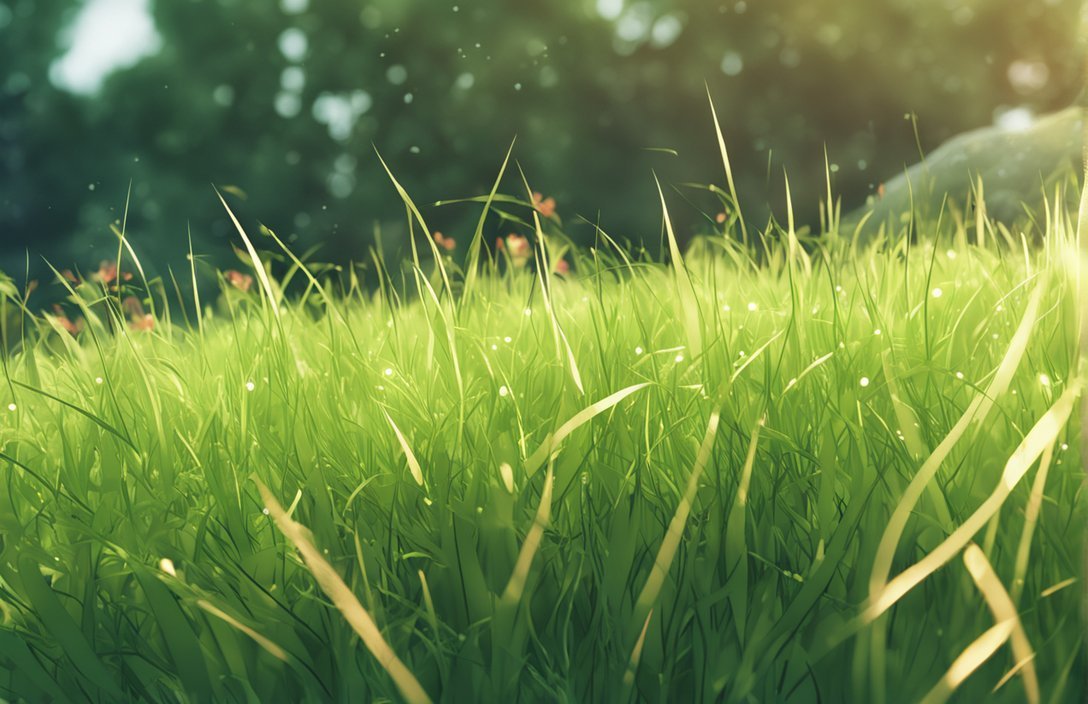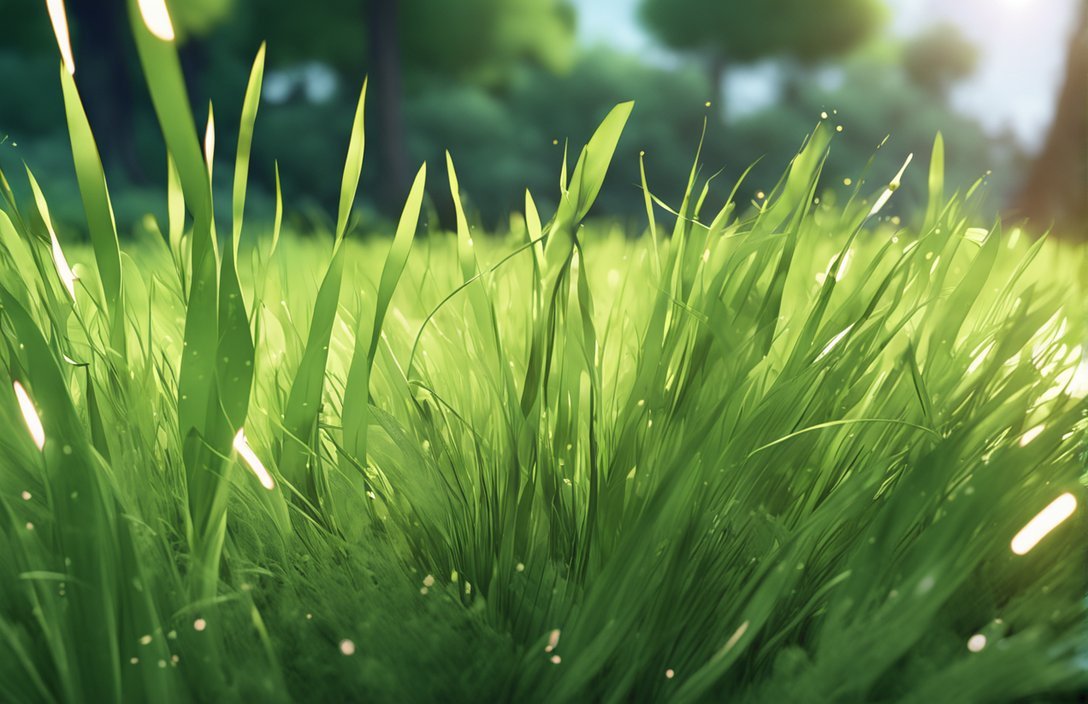Get ready to dive into the fascinating world of grass! In this article, titled “Grass Unleashed: Explore Fun Facts in Horticulture,” we will unravel some intriguing details about this ubiquitous plant that often goes unnoticed. From surprising uses in the production of alcohol to its ability to keep your house cool, we’ll uncover the hidden wonders of grass. And did you know that bamboo is actually part of the grass family? Join us on this captivating journey as we explore the diverse species, history, and ecological significance of grass, shedding light on its often underappreciated role in our environment.

Key Takeaways:
- Over 10,000 different types of grass exist, each with its own unique characteristics and uses.
- Grass conserves water, prevents soil erosion, and improves air quality.
- Grass acts as a natural air conditioner, reducing the temperature of the surrounding area.
- Grasslands make up approximately 20% of the Earth’s vegetation.
- Palm trees are classified as giant grasses, sharing characteristics with other grass species.
- Grass specimens as old as 200,000 years have been discovered, making grass the oldest living organism.
- The Centre Court at Wimbledon is the most expensive lawn in the world, meticulously maintained to stay in pristine condition.
- Grass makes up 20% of the Earth’s vegetation and grows in a variety of environments.
- Fossilized grass specimens provide insights into the ancient history of this plant.
- Many popular alcoholic beverages, such as beer and whiskey, are made from grains derived from different types of grass.
- Grass belongs to the plant family ‘Gramineae’ or ‘Poaceae’ and shares common characteristics like long leaves and jointed stems.
- Despite its appearance, bamboo is actually part of the grass family.
Fun Facts About Grass
Grass is often overlooked and taken for granted, but it holds a wealth of fascinating facts that can ignite your curiosity about the wonders of nature. From its immense variety to its ecological significance, let’s dive into some fun and lesser-known facts about grass that are sure to amaze you.
1. Over 10,000 Different Types of Grass Exist
Did you know that there are over 10,000 different types of grass? Each species of grass boasts its own unique characteristics and uses, ranging from the soft and plush Bermuda grass to the sturdy and resilient Kentucky bluegrass. Whether you’re walking barefoot on a luxurious lawn or admiring the wild grasses of a meadow, the diversity of grass is truly remarkable.
2. Grass Conserves Water and Cleans Air
Beyond its aesthetic appeal, grass plays a vital role in our environment. Its deep roots help prevent soil erosion and act as natural sponges, absorbing excess water and reducing the risk of flooding. Additionally, grass acts as a valuable air purifier, filtering pollutants and improving the quality of the air we breathe. So, the next time you take a deep breath outside, remember to thank the grass!
3. Grass Acts as a Natural Air Conditioner
Imagine this: It’s a scorching summer day, and you’re seeking relief from the sweltering heat. Did you know that grass can actually act as a natural air conditioner, reducing the temperature of the surrounding area by up to 14 degrees Fahrenheit? Its ability to cool the environment makes grass a true ally in hot climates, providing a refreshing oasis amidst the heat.
4. Grasslands Cover Most of the Earth
Grasslands may not often be the backdrop of your daydreams, but they cover approximately 20% of the Earth’s vegetation. From the vast prairies of North America to the sprawling savannas of Africa, grasslands dominate extensive areas of our planet. They not only provide habitats for countless animal species but also contribute to the global carbon cycle, making grasslands vital in maintaining Earth’s delicate balance.
5. Palm Trees: More Than Meets the Eye
Next time you admire the elegance of a palm tree, you may be surprised to learn that it is not actually a tree at all. Palm trees belong to the grass family, sharing many similarities with other grass species, such as thin, elongated leaves and jointed stems. So, the next time you’re strolling along a sandy beach, remember that the towering palm trees are just “tall grass” in disguise!
6. Ancient Origins of Grass
Grass may seem ordinary, but it holds the honor of being the oldest living organism discovered. Scientists have unearthed grass specimens that date back over 200,000 years. These ancient blades of grass provide invaluable insights into our planet’s ancient history and serve as a living testament to the resilience and adaptability of this remarkable plant.
7. A Pristine Lawn at a Price
If you’ve ever watched a tennis match at Wimbledon, you may have marveled at the immaculate condition of the Centre Court lawn. Believe it or not, this world-renowned tennis court is home to the most expensive lawn in the world. Meticulous care, attention, and extensive maintenance efforts are required to keep the grass in pristine condition for the players, highlighting the paramount importance of grass in the world of sports.
8. Grass: A Global Vegetation Powerhouse
Grass is not just a small player in the botanical world. It constitutes an impressive 20% of the Earth’s vegetation. This abundant predominance can be attributed to grass’s adaptability and ability to thrive in a wide range of environmental conditions. Its ubiquity and versatility make grass a true powerhouse in the world of plants.
9. Fossilized Grass: A Glimpse into Ancient History
As if being the oldest living organism wasn’t impressive enough, scientists have also discovered fossilized grass specimens. These ancient remnants provide a fascinating window into the history and evolution of grass, granting us a glimpse into worlds long gone. So, the next time you look at a patch of grass, remember that it connects us to our ancient past.
10. Grains of Knowledge
Raise a glass to grass because it deserves a toast! Many popular alcoholic beverages, such as beer and whiskey, are made from grains derived from various types of grass. So, the next time you enjoy a refreshing pint or sip on a fine whiskey, take a moment to appreciate the grassy origins of your drink.
11. The Technical Name: ‘Graminoids’
Grasses may be admired for their beauty and functionality, but they also have a scientific side. They belong to the plant family ‘Gramineae’ or ‘Poaceae,’ and their technical name is ‘graminoids’. This name encapsulates the shared characteristics of grasses, from their long and slender leaves to their jointed stems. So, when you’re marveling at a lush green field, know that you are in the presence of ‘graminoids’.
12. Bamboo: The Grass of the Giants
Finally, we encounter the majestic bamboo, known for its towering height and sturdy build. Despite its tree-like appearance, bamboo is actually part of the grass family. Just like other grass species, it boasts thin, elongated leaves and jointed stems. So, when you gaze at a flourishing bamboo forest, you’re witnessing the hidden power of the grass family.
These fascinating facts about grass truly bring to light its diverse nature and its profound impact on our lives and the environment. From its vast variety to its crucial ecological contributions, grass continues to enrich and amaze us. So, the next time you find yourself stepping on a lush green lawn or admiring the sway of grasses in the wind, take a moment to appreciate the wonders this seemingly humble plant has to offer.
Sources:
[1]: The Grass Outlet: 10 Interesting Grass Facts
[2]: Boggling Facts: 14 Fun Facts About Grass That Will Surprise You
Check out these fascinating facts about concrete that will blow your mind!
Fact #2 – A healthy lawn can help to keep your house cool.
Did you know that your healthy lawn can actually act as a natural air conditioner for your house? It’s true! Grass has some amazing properties that can help cool down your home during those hot summer months. Let’s take a closer look at this fascinating fact and explore how your lawn can keep your house cool.
The Science behind it
Grass blades have the ability to absorb and disperse the sun’s rays. This means that when the sun shines on your lawn, the grass effectively cools down the surrounding ground. By preventing the ground from taking in and storing the sun’s heat, your healthy lawn can play a significant role in keeping your house cool [^1^].
How Does it Work?
Think of your lawn as a protective blanket that shields your house from the heat. When the sun’s rays hit the grass blades, they are absorbed. This absorption process prevents the energy from reaching and heating up the ground beneath the grass. As a result, the temperature of the surrounding area stays lower compared to bare soil or concrete surfaces.
The Benefits of a Cool Home
The benefits of a cool home go beyond just comfort. By using your lawn to keep your house cool, you can also reduce your energy consumption and lower your utility bills. When your house stays cooler naturally, you won’t need to rely as much on air conditioning, which can be a big energy drain [^1^].
Additional Benefits of a Healthy Lawn
In addition to keeping your house cool, a healthy lawn comes with a host of other benefits. Let’s explore some of them:
- Oxygen Release: A healthy lawn releases a tremendous amount of oxygen, which improves the air quality around your home [^2^].
- Dirt and Dust Capture: Grass can capture large amounts of dirt and dust, acting as a natural filter for the air and improving overall air quality [^2^].
- Erosion Prevention: The roots of grass act as an anchor for loose soil and sand, preventing soil erosion and maintaining the stability of the ground [^3^].
- Aesthetics: A healthy, lush lawn enhances the overall appearance of your home and creates a welcoming outdoor space for you and your family.
In conclusion, a healthy lawn offers more than just aesthetic appeal. It can help keep your house cool during those hot summer months, reduce your energy consumption, and improve the air quality around your home. So, take good care of your lawn and enjoy the many benefits it provides.
Key Takeaways:
- A healthy lawn can act as a natural air conditioner for your house.
- Grass absorbs and disperses the sun’s rays, preventing the ground from taking in and storing the sun’s heat.
- By effectively cooling the surrounding ground, your lawn can contribute to keeping your house cool.
- A cool home can reduce energy consumption and lower utility bills.
- A healthy lawn also releases oxygen, captures dirt and dust, and prevents soil erosion.
Sources:
[^1^]: The Grass People – Fun facts about grass!
[^2^]: The Family Handyman – How to Achieve a Healthy Lawn
Fact #3 – Bamboo is part of the grass family.
Bamboo, with its towering stalks and lush leaves, has a captivating presence. It may surprise you to know that despite its appearance, bamboo is, in fact, a member of the grass family (Poaceae). This fascinating fact sheds light on the diversity and versatility of grass species around the world.
Bamboo takes its place as the tallest member of the grass family, reaching staggering heights of 24-30 meters. Its remarkable growth rate also sets it apart, making it the fastest-growing plant on Earth. In just 24 hours, bamboo can shoot up an astonishing 47.6 inches, a feat that showcases its incredible vitality.
With over 1,400 species, bamboo showcases the impressive range found within the grass family. These diverse species exhibit unique characteristics, from their growth patterns to their role in ecosystems. Additionally, bamboo stands out for its longevity, with some individuals living for more than 120 years.
The inclusion of bamboo in the grass family highlights the shared traits and characteristics among different grass species. Despite their variations in appearance and function, grasses, including bamboo, possess common features that unite them under the Poaceae plant family.
Not only does bamboo add diversity to the grass family, but it also plays a crucial ecological role. Bamboo surpasses other trees in its oxygen-releasing capabilities, making it a key contributor to our planet’s oxygen balance. Additionally, bamboo’s exceptional capacity for carbon dioxide absorption, at a rate of 17 tons per hectare, further emphasizes its environmental significance.
Drought-resistance and independence from fertilizers are among bamboo’s remarkable qualities. These attributes demonstrate its resilience and ability to thrive in various conditions, making it a valuable resource for sustainable landscaping and reforestation efforts.
In summary, bamboo’s inclusion in the grass family (Poaceae) unveils the immense diversity and adaptability present within this plant group. With its exceptional growth rate, towering presence, and ecological importance, bamboo stands as a testament to the wonders of grasses in nature.
Key Takeaways:
- Bamboo, despite its appearance, falls under the grass family (Poaceae).
- It is the tallest grass species, reaching heights of 24-30 meters.
- Bamboo is the fastest-growing plant on Earth, with a growth rate of 47.6 inches in just 24 hours.
- There are over 1,400 species of bamboo, showcasing the remarkable diversity found within the grass family.
- Bamboo stands out for its longevity, with some individuals living for more than 120 years.
- Bamboo releases more oxygen and absorbs more carbon dioxide than other trees, highlighting its ecological significance.
- Bamboo is drought-resistant and does not require fertilizers, making it a valuable resource for sustainable landscaping and reforestation efforts.
Sources:
1. Fun Facts About Grass! | The Grass People
2. Awesome 10 Bamboo Plant Facts – Bamboo Fun Facts For Kids

FAQ
Q1: Is it true that grass is used to make alcohol?
A1: Yes, many popular alcoholic beverages such as beer and whiskey are made from grains derived from various types of grass.
Q2: How can a healthy lawn help to keep your house cool?
A2: A healthy lawn acts as a natural air conditioner by absorbing and dispersing the sun’s rays, preventing the ground from taking in and storing the sun’s heat. This helps to reduce the temperature of the surrounding area, including your house.
Q3: I heard that bamboo is part of the grass family. Is that true?
A3: Yes, that is correct. Bamboo is actually a member of the wider grass family known as Poaceae. Despite its tree-like appearance, bamboo shares many characteristics with other grass species.
Q4: Are there any other interesting facts about grass?
A4: Yes, grass covers most of the Earth’s surface, with grasslands making up the majority of the planet’s vegetation. Additionally, the Centre Court at Wimbledon is considered the most expensive grass lawn in the world.
Q5: How many species of grass are there?
A5: There are over 10,000 different types of grass, each with its own unique characteristics and uses.
- China II Review: Delicious Food & Speedy Service - April 17, 2025
- Understand Virginia’s Flag: History & Debate - April 17, 2025
- Explore Long Island’s Map: Unique Regions & Insights - April 17, 2025
















